For those who have heard of the Segway brand before, chances are it was in relation to the famous self-balancing scooters often seen whizzing around busy cities. Today, the Segway brand is much more than self-balancing scooters and the likes, having ventured into the powersports market.
In 2019, the Chinese-based Segway Ninebot Group formed Segway Powersports, which would design and build ATVs and UTVs for both work and recreational markets. Currently, Segway Powersports offer one ATV model, this being the AT6, which is available in short and long wheelbase formats. Aside from ATVs, Segway so far offers its Fugleman UT10 UTV and Villain SX10 sports buggy.
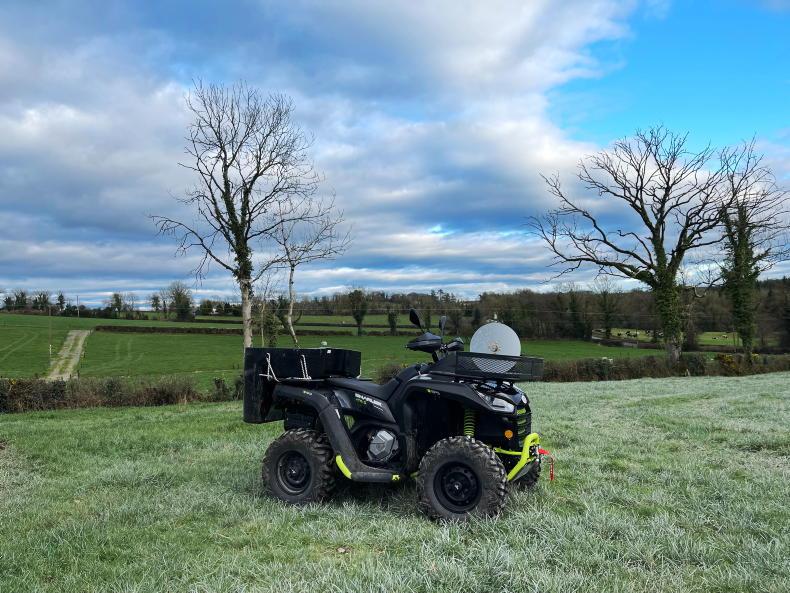
Segway Powersports has been building the Snarler since 2019
Segway joins a long list of budget-orientated Chinese manufacturers with a distinct presence on the Irish and UK markets. While build quality has been the demise of many of these Far-East options, Segway emphasises quality has been its focus from the get-go.
Segway has managed to set itself aside from the rest of its native-built machines, with competitive pricing being one of the few similarities.
With a price tag of €9,000 for the short wheelbase version, the Snarler AT6 is thousands cheaper than the mainstream competition of Honda, Suzuki or Yamaha.
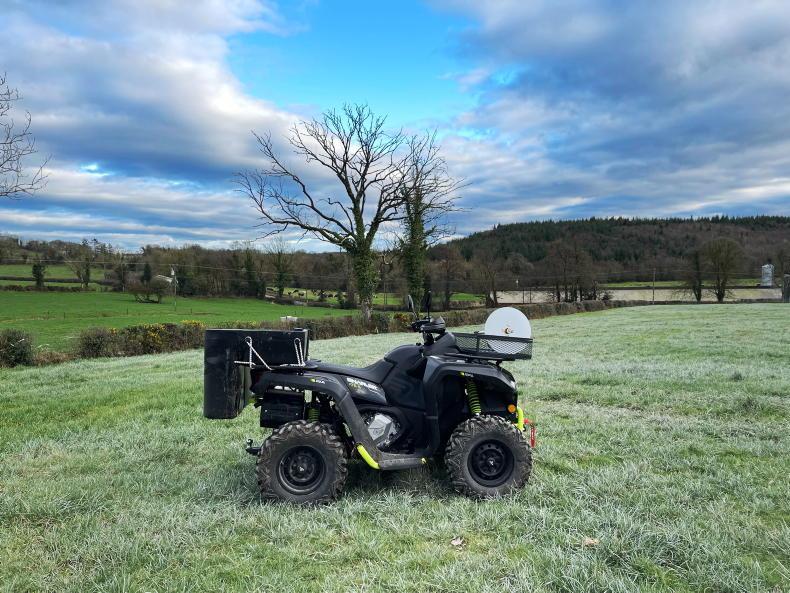
The Snarler AT6 is fitted with a 570cc single cylinder fuel injected engine.
Dualways Ltd is the importer for the Segway brand, both in Ireland and the UK. However, Quadfactors based in Navan, Co Meath is the appointed Irish distributor. Having kindly supplied us with our test machine, Quadfactors outlined its plans to appoint a number of dealers throughout the country within the coming months.
Driveline
The Snarler AT6 is fitted with a 570cc single cylinder, electronically injected four-stroke engine, which produces a maximum 44hp and 48Nm of torque. This liquid-cooled motor is coupled with a dual range, belt-driven continuously variable transmission (CVT) – an industry standard at this stage within the power category – with the exception of Honda’s Foreman, which still flaunts a five-speed manual gearbox with an electric shift option.
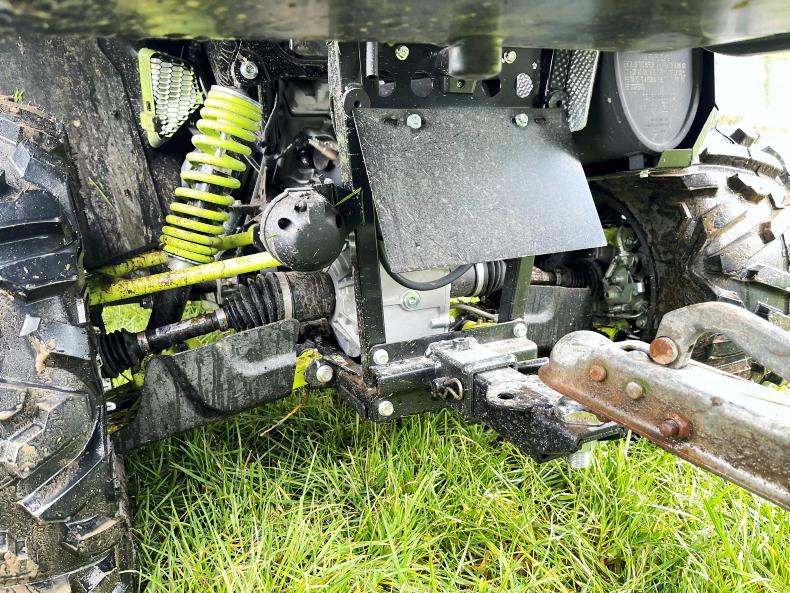
As part of the road homologation kit a trailer light socket and number plate holder is fitted.
High and low, as well as reverse, park and neutral can be selected via the gear shifter once the foot brake is pressed. The shifter is positioned on the right-hand side, as opposed to the left as it is on most competitors. The Snarler lacks a cranked gate for the shift lever to slot into to confirm gear selection, meaning a quick glance is often needed. Nonetheless, the shifter naturally slots into position once the driver is familiar with it. Some persuasion was occasionally needed to engage ‘park’. Top speed is limited to 65km/h before the engine starts to splutter and the transmission restricts itself.

Inside the front storage compartment is a 12v power socket and two USB ports.
Aside from needing a few more engine revs, the transmission proved responsive – even when towing a 5ftx3ft quad trailer loaded with sticks in ‘High’ range. Engine retardation was able to slow the quad down on descents well, regardless of the selected range, but as expected ‘Low’ proved more effective. This brings us onto the topic of brakes – each corner of which shows a hydraulically operated disc setup. Pulling the right-hand brake lever quickly grinds all four wheels to pretty much an immediate halt.
Build and suspension
On first impressions, the Snarler felt quite big and clunky, and harder to mount compared to its Honda, Suzuki or Yamaha rivals. A greater swing of the leg was needed, which we put down to the deeper footwells. However, the overall stature of the quad is something we became accustomed to after a few hours.
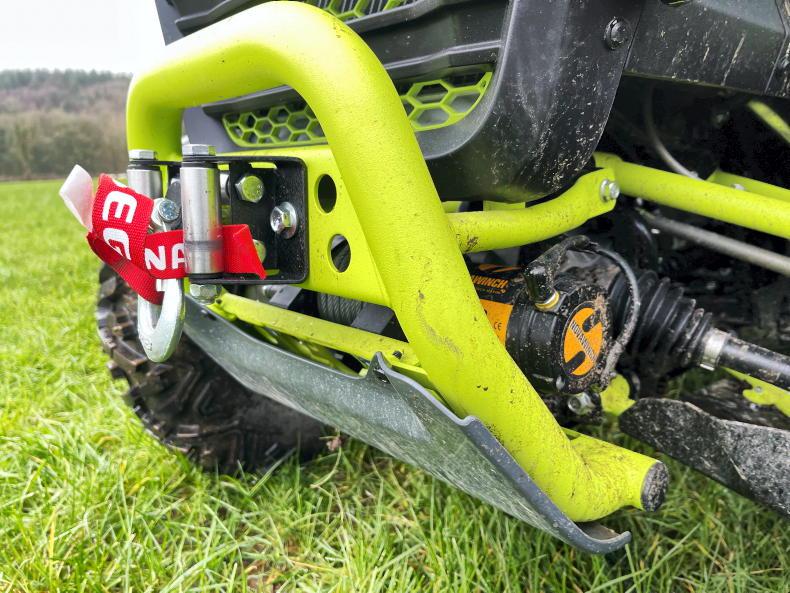
The 3,000lb (1,360kg) front winch is fitted as standard.
Once seated, riding position was higher than most but still comfortable. Integral to the Snarler’s structure is its lightweight steel frame, with each corner benefiting from independent Dual-A arm suspension offering 18cm and 21cm of front and rear travel respectively. Bumps and ruts were smoothed out well but not to the point where the quad felt floaty. In a nutshell, the suspension felt soft when expected and stiff where it needed to be, eg when cornering under speed, towing or while the cargo racks were being loaded – an important attribute of any good farm quad.
A quick inspection revealed numerous grease nipples on the front and rear suspension arms. These will require regular greasing to avoid potential wear. Other standard features include the switchable 2wd/4wd, and front and rear diff locks.
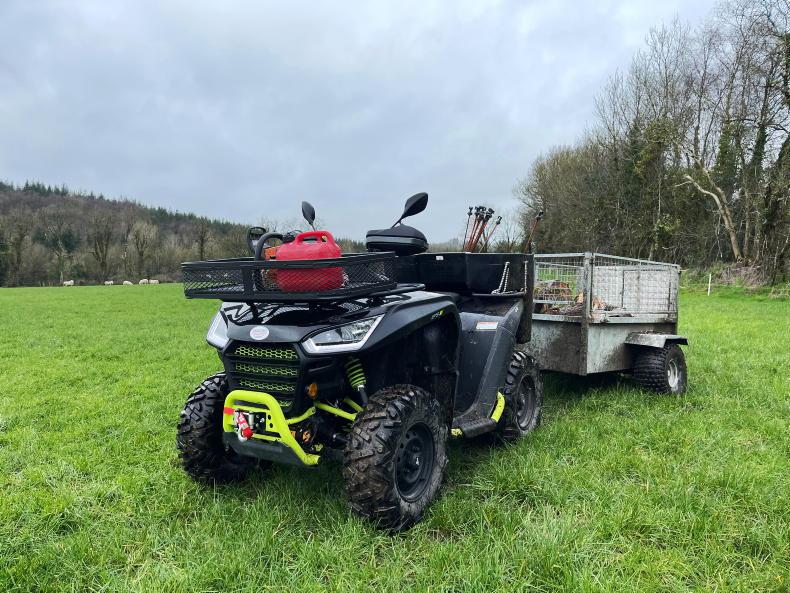
The front cargo rack has a capacity of 40kg while the rear is 80kg.
To its praise, both handling and turning circles went unchanged in 4wd, which isn’t the case with most quads. We initially wondered whether or not 4wd was working, although we quickly found out it was when towing through stickier conditions. The on-screen 4wd/front diff lock symbol proved very hard to see, however, especially while on the move – something that could have been made larger, given the size of the display.
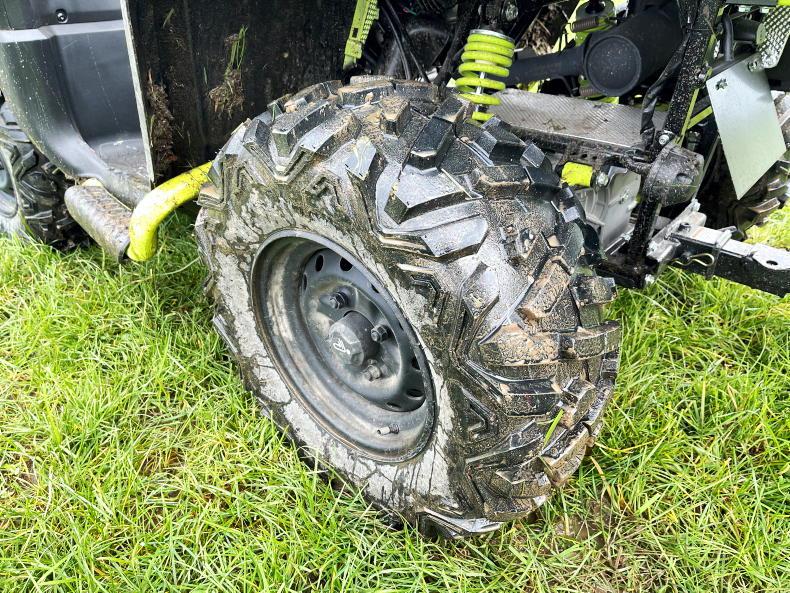
The AT6 was fitted with grippy Wanda 25x8R12 and 25x10R12 tyres as standard.
Rack capacities were pretty much on par with its rivals, offering 40kg on the front rack and 80kg on the rear. However, towing capacity is a bit of a let-down, rating at 300kg compared to the Suzuki Kingquad at 600kg.
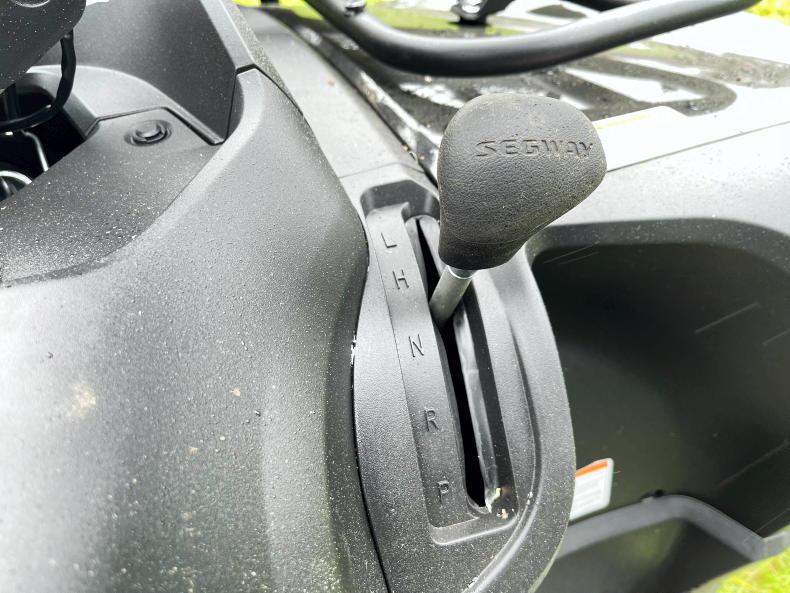
A cranked gate would have improved the ease of gear shifting.
As standard, the AT6 was fitted with 25x8 R12 (front) and 25x10x R12 (rear) tyres, which provided better grip in comparison to the Carlisle tyres commonly fitted as per standard on competitors.
Other features
The Snarler comes road-homologated from factory where many other brands do not. This sees indicators and a socket for trailer lights and a number plate holder fitted as standard. A 3,000lb (1,360kg) electric winch also comes fitted from factory.
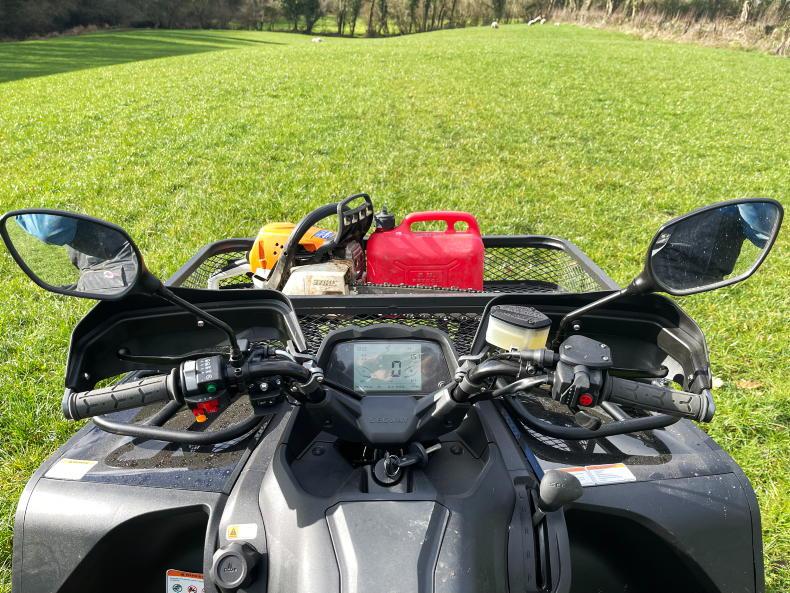
The Snarler is fitted with electric power steering as standard.
We put it to the test while pulling a wind-felled tree. It worked effortlessly compared to some of the factory winches tried on previous tests.
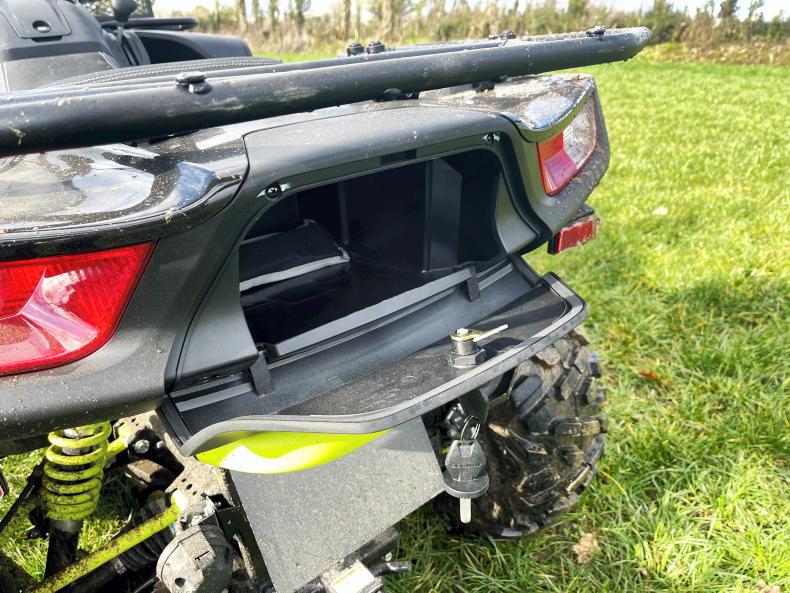
The rear lockable storage compartment offers plenty of space.
With a belly pan providing undercarriage protection, the front end and sides are protected with steel bars, which can act as steps and strengthen the foothold of riders hopping on and off.
Two lockable storage compartments are on-board: one between the driver’s legs and a larger one at the rear. The front compartment homes a 12v power socket and twin USB port.
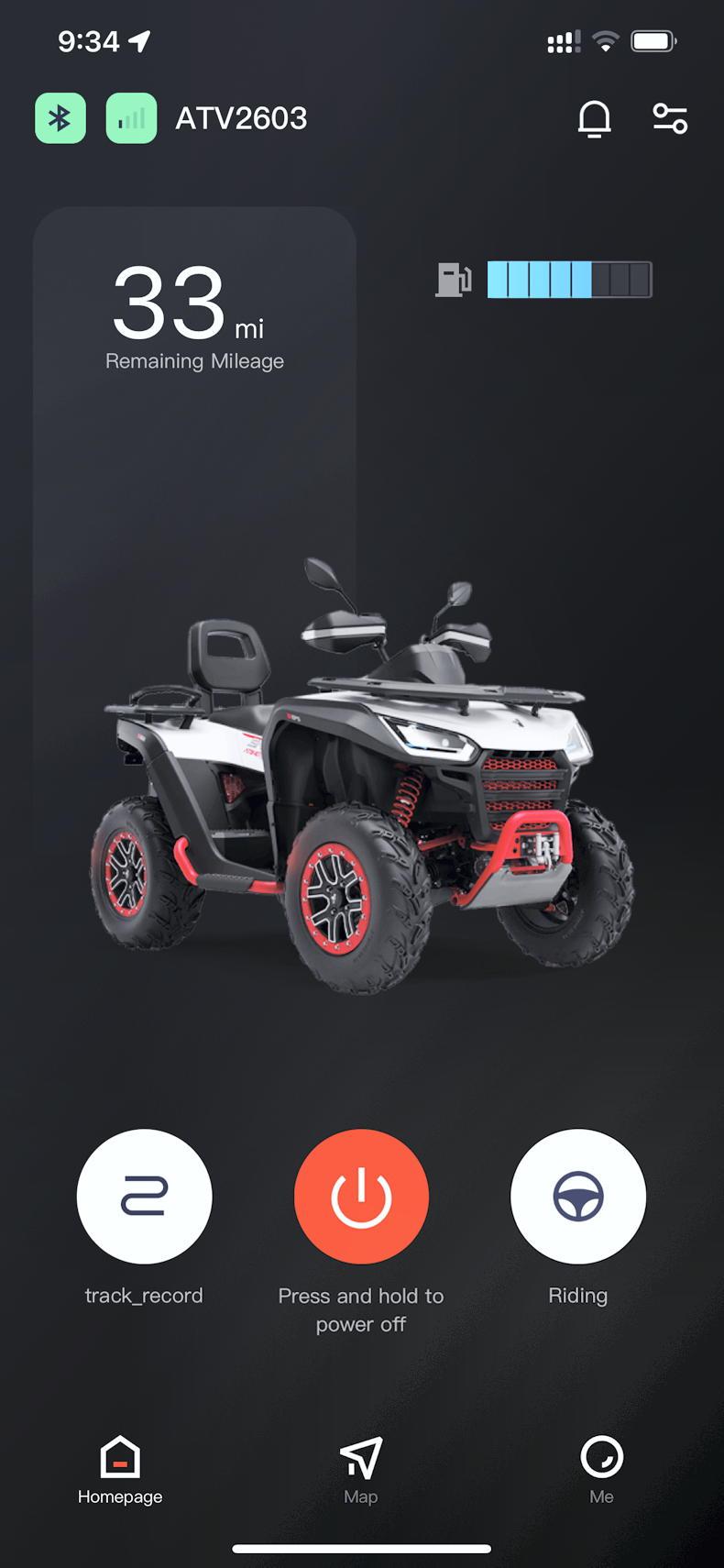
The Segway Powersports app provides real time data and allows settings to be changed.
The handlebar-mounted switchgear has a quality feel. Meanwhile, a large digital dashboard displays vital information on-screen, while buttons on the left and right control screen brightness, and switch between km/h and mph.
Telematics
The Snarler comes loaded with tech features, all of which can be accessed through the Segway Powersports phone app. Once paired with the quad and connected to the internet, operators have the ability to adjust ride settings, turn on lights, start/stop the engine, set speed limits and lock the quad. All trip-related data, including total mileage, route travelled, fuel level, acceleration, average speed and service intervals can be accessed. A built-in tracking device allows riders to see their position and set up geo-fences.
The Segway Snarler AT6 S surpassed our expectations in most areas, especially build quality. Taking into account its performance, build quality and price, it definitely offers exceptional bang for buck.
However, with our practical farming caps on, we had a few minor gripes that if rectified, would leave it hard to pass on. First up are the loud colour schemes, in which three colours are offered. These include green and black (as tested); white and red; and grey and blue. A plain colour scheme would appear more practical.
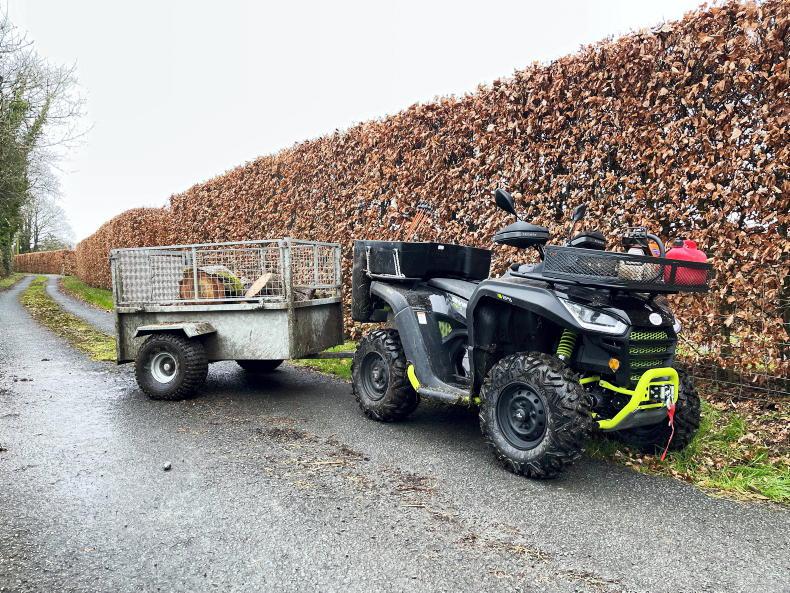
The legal towing capacity of 300kg is a bit of a let down knowing it is capable of towing more.
With dimensions of 234cmx128cmx 143cm (LxBxH), the Snarler is quite a bit bigger in stature than the Honda Foreman 520 at 210cmx120cmx121cm. In our opinion, a farm quad should be compact and easily accessed. The official towing capacity at 300kg feels like a bit of a let-down, knowing it is capable of towing more.
If these changes were made and offered as part of an agricultural model, the Snarler would take some beating. However, while these are areas we feel would benefit from some tweaking, all the critical components, such as engine, transmission, suspension and brakes proved decent.
Taking this into account with the level of specification offered as standard, the Snarler AT6 is a quad worth considering, especially if curtailed by budget.
Segway Snarler AT6 S
Engine: 570cc single-cylinder.
Power: 44hp (48Nm).
Transmission: Dual range CVT with selectable 4wd.
Differentials: Front diff lock.
Suspension: Independent dual A-arm, 18cm front travel/21cm rear travel.
Rack capacity: 40kg front/80kg rear.
Towing capacity: 300kg.
Dry weight: 360kg.
Ground clearance: 26cm.
List price: €7,320 plus VAT.
For those who have heard of the Segway brand before, chances are it was in relation to the famous self-balancing scooters often seen whizzing around busy cities. Today, the Segway brand is much more than self-balancing scooters and the likes, having ventured into the powersports market.
In 2019, the Chinese-based Segway Ninebot Group formed Segway Powersports, which would design and build ATVs and UTVs for both work and recreational markets. Currently, Segway Powersports offer one ATV model, this being the AT6, which is available in short and long wheelbase formats. Aside from ATVs, Segway so far offers its Fugleman UT10 UTV and Villain SX10 sports buggy.

Segway Powersports has been building the Snarler since 2019
Segway joins a long list of budget-orientated Chinese manufacturers with a distinct presence on the Irish and UK markets. While build quality has been the demise of many of these Far-East options, Segway emphasises quality has been its focus from the get-go.
Segway has managed to set itself aside from the rest of its native-built machines, with competitive pricing being one of the few similarities.
With a price tag of €9,000 for the short wheelbase version, the Snarler AT6 is thousands cheaper than the mainstream competition of Honda, Suzuki or Yamaha.

The Snarler AT6 is fitted with a 570cc single cylinder fuel injected engine.
Dualways Ltd is the importer for the Segway brand, both in Ireland and the UK. However, Quadfactors based in Navan, Co Meath is the appointed Irish distributor. Having kindly supplied us with our test machine, Quadfactors outlined its plans to appoint a number of dealers throughout the country within the coming months.
Driveline
The Snarler AT6 is fitted with a 570cc single cylinder, electronically injected four-stroke engine, which produces a maximum 44hp and 48Nm of torque. This liquid-cooled motor is coupled with a dual range, belt-driven continuously variable transmission (CVT) – an industry standard at this stage within the power category – with the exception of Honda’s Foreman, which still flaunts a five-speed manual gearbox with an electric shift option.

As part of the road homologation kit a trailer light socket and number plate holder is fitted.
High and low, as well as reverse, park and neutral can be selected via the gear shifter once the foot brake is pressed. The shifter is positioned on the right-hand side, as opposed to the left as it is on most competitors. The Snarler lacks a cranked gate for the shift lever to slot into to confirm gear selection, meaning a quick glance is often needed. Nonetheless, the shifter naturally slots into position once the driver is familiar with it. Some persuasion was occasionally needed to engage ‘park’. Top speed is limited to 65km/h before the engine starts to splutter and the transmission restricts itself.

Inside the front storage compartment is a 12v power socket and two USB ports.
Aside from needing a few more engine revs, the transmission proved responsive – even when towing a 5ftx3ft quad trailer loaded with sticks in ‘High’ range. Engine retardation was able to slow the quad down on descents well, regardless of the selected range, but as expected ‘Low’ proved more effective. This brings us onto the topic of brakes – each corner of which shows a hydraulically operated disc setup. Pulling the right-hand brake lever quickly grinds all four wheels to pretty much an immediate halt.
Build and suspension
On first impressions, the Snarler felt quite big and clunky, and harder to mount compared to its Honda, Suzuki or Yamaha rivals. A greater swing of the leg was needed, which we put down to the deeper footwells. However, the overall stature of the quad is something we became accustomed to after a few hours.

The 3,000lb (1,360kg) front winch is fitted as standard.
Once seated, riding position was higher than most but still comfortable. Integral to the Snarler’s structure is its lightweight steel frame, with each corner benefiting from independent Dual-A arm suspension offering 18cm and 21cm of front and rear travel respectively. Bumps and ruts were smoothed out well but not to the point where the quad felt floaty. In a nutshell, the suspension felt soft when expected and stiff where it needed to be, eg when cornering under speed, towing or while the cargo racks were being loaded – an important attribute of any good farm quad.
A quick inspection revealed numerous grease nipples on the front and rear suspension arms. These will require regular greasing to avoid potential wear. Other standard features include the switchable 2wd/4wd, and front and rear diff locks.

The front cargo rack has a capacity of 40kg while the rear is 80kg.
To its praise, both handling and turning circles went unchanged in 4wd, which isn’t the case with most quads. We initially wondered whether or not 4wd was working, although we quickly found out it was when towing through stickier conditions. The on-screen 4wd/front diff lock symbol proved very hard to see, however, especially while on the move – something that could have been made larger, given the size of the display.

The AT6 was fitted with grippy Wanda 25x8R12 and 25x10R12 tyres as standard.
Rack capacities were pretty much on par with its rivals, offering 40kg on the front rack and 80kg on the rear. However, towing capacity is a bit of a let-down, rating at 300kg compared to the Suzuki Kingquad at 600kg.

A cranked gate would have improved the ease of gear shifting.
As standard, the AT6 was fitted with 25x8 R12 (front) and 25x10x R12 (rear) tyres, which provided better grip in comparison to the Carlisle tyres commonly fitted as per standard on competitors.
Other features
The Snarler comes road-homologated from factory where many other brands do not. This sees indicators and a socket for trailer lights and a number plate holder fitted as standard. A 3,000lb (1,360kg) electric winch also comes fitted from factory.

The Snarler is fitted with electric power steering as standard.
We put it to the test while pulling a wind-felled tree. It worked effortlessly compared to some of the factory winches tried on previous tests.

The rear lockable storage compartment offers plenty of space.
With a belly pan providing undercarriage protection, the front end and sides are protected with steel bars, which can act as steps and strengthen the foothold of riders hopping on and off.
Two lockable storage compartments are on-board: one between the driver’s legs and a larger one at the rear. The front compartment homes a 12v power socket and twin USB port.

The Segway Powersports app provides real time data and allows settings to be changed.
The handlebar-mounted switchgear has a quality feel. Meanwhile, a large digital dashboard displays vital information on-screen, while buttons on the left and right control screen brightness, and switch between km/h and mph.
Telematics
The Snarler comes loaded with tech features, all of which can be accessed through the Segway Powersports phone app. Once paired with the quad and connected to the internet, operators have the ability to adjust ride settings, turn on lights, start/stop the engine, set speed limits and lock the quad. All trip-related data, including total mileage, route travelled, fuel level, acceleration, average speed and service intervals can be accessed. A built-in tracking device allows riders to see their position and set up geo-fences.
The Segway Snarler AT6 S surpassed our expectations in most areas, especially build quality. Taking into account its performance, build quality and price, it definitely offers exceptional bang for buck.
However, with our practical farming caps on, we had a few minor gripes that if rectified, would leave it hard to pass on. First up are the loud colour schemes, in which three colours are offered. These include green and black (as tested); white and red; and grey and blue. A plain colour scheme would appear more practical.

The legal towing capacity of 300kg is a bit of a let down knowing it is capable of towing more.
With dimensions of 234cmx128cmx 143cm (LxBxH), the Snarler is quite a bit bigger in stature than the Honda Foreman 520 at 210cmx120cmx121cm. In our opinion, a farm quad should be compact and easily accessed. The official towing capacity at 300kg feels like a bit of a let-down, knowing it is capable of towing more.
If these changes were made and offered as part of an agricultural model, the Snarler would take some beating. However, while these are areas we feel would benefit from some tweaking, all the critical components, such as engine, transmission, suspension and brakes proved decent.
Taking this into account with the level of specification offered as standard, the Snarler AT6 is a quad worth considering, especially if curtailed by budget.
Segway Snarler AT6 S
Engine: 570cc single-cylinder.
Power: 44hp (48Nm).
Transmission: Dual range CVT with selectable 4wd.
Differentials: Front diff lock.
Suspension: Independent dual A-arm, 18cm front travel/21cm rear travel.
Rack capacity: 40kg front/80kg rear.
Towing capacity: 300kg.
Dry weight: 360kg.
Ground clearance: 26cm.
List price: €7,320 plus VAT.



















 This is a subscriber-only article
This is a subscriber-only article










SHARING OPTIONS: